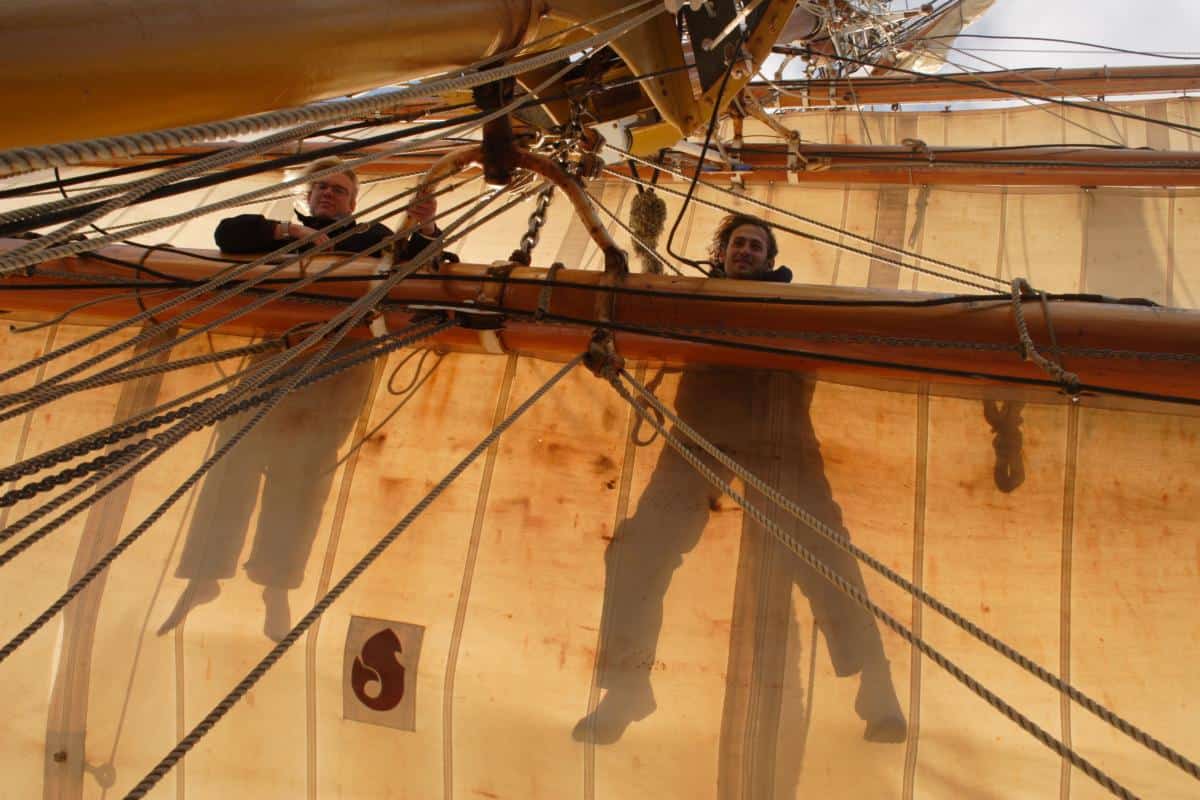Square Rig Manoeuvre’s
This is a series of FREE tips on manoeuvering square riggers.
Not many of us will reach the lofty heights of tall ship captain, but it is nice to know what is going on. Here are some of the manoeuvere’s that are markedly different from sailing a ‘fore and aft’ rigged sailing ship.
- Tacking a square rigger
- Wearing Ship (similar to gybing)
- Sailing Away from Anchor
- Heaving To (stopping a square rigger)

What is ‘Heaving to’?
The act of ‘heaving to’ is a manoeuvre to quickly stop under sail. It can be achieved with many different sail plans, not just square rig. The techniques vary a bit between types of vessel. To reduce speed on a square rigger, you just start taking away sails. If you want to stop more urgently then ‘heaving to’ is really the only sensible option.
How not to stop a square rigger
To do an emergency stop on a schooner you could sail her up into the wind to stop her, although there would be a lot of flapping sails.
On a square rigger sailing into the wind would immediately back the square sails so the wind is pushing on the wrong side and you could risk loosing a mast.
The foremast is particularly vulnerable because all the ‘standing rigging’ is designed mainly for going downwind, plus all the flapping headsails would put more stresses on that mast.
Another problem with going all aback is that it is very hard to get the square sails down, and more dangerous to go aloft and stow them. If you have to stop in a hurry, or just want to pause in the middle of the ocean, then the ‘hove to’ manoeuvre is a good one, because the only mast you back is the main mast.

How to Hove To a Square Rigger
This is based on the techniques used on barque Europa.
A barque has three masts with square sails on the main and foremast.
1. Clew up the main course
2. Sail up onto a beam reach
3. Brace the main mast square
You need a team to brace each yard on the main mast and bring them all square, and possibly a bit sharper until they all back with the wind on the wrong side.
4. Now the Sails Counter Each Other Out
The sails on the foremast are pulling normally and trying to sail you forward and away from the wind. The main mast square sails are backed and the wind on them is trying to swing the ship back. The resultant effect is that the forces counter act each other and the ship is stationary with most the sail still set.
6. Ship Comes to a Stop
With most your sails still set, it is easier to get going again – in theory!
7. Give it a Go
You can try this technique , with the captains approval, for real on any similarly rigged barque as long as it is not attempted in too strong winds or big seas, because of the strain on the masts. If you have stun’sails up – then it all gets a bit tricky.
Barques you can sail on with Classic Sailing
Europa Voyages
Lord Nelson Voyages
Tenacious Voyages
Reasons for Heaving to
Man Overboard (or practice drill)
To take a pilot on board
To go for a swim mid ocean
Launch or recover a ships boat
Take in a caught fish
Rescue a trapped turtle





